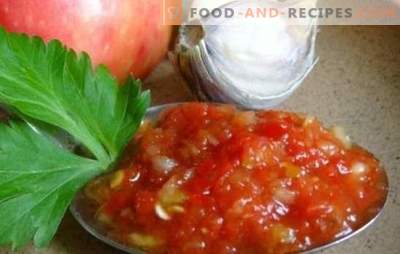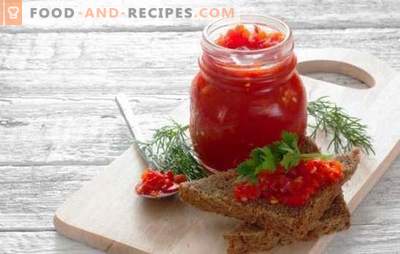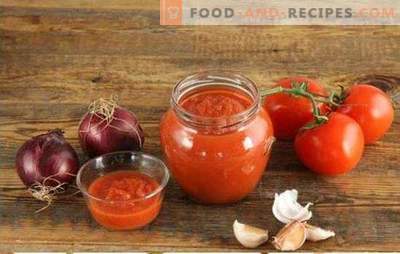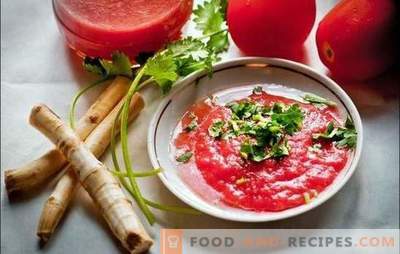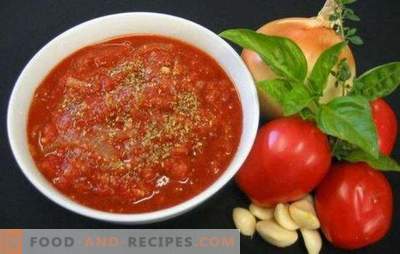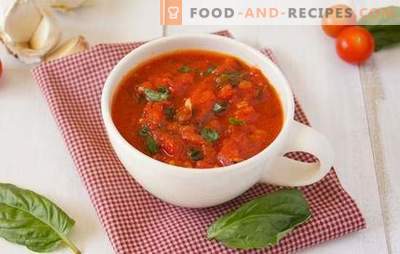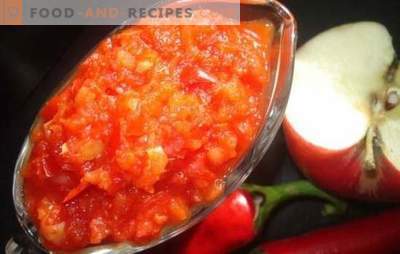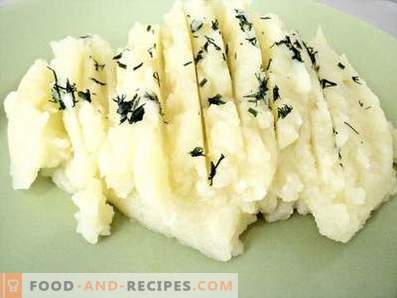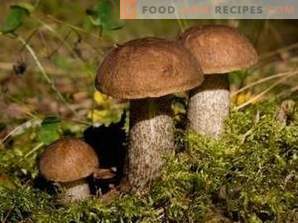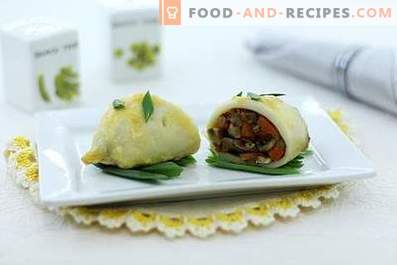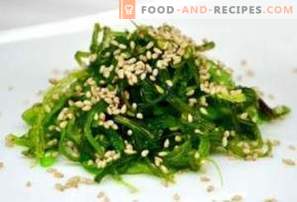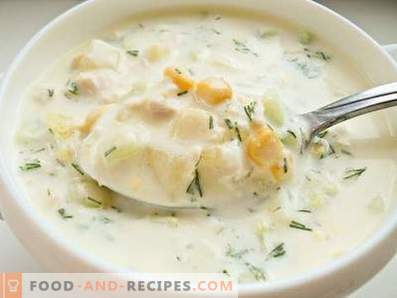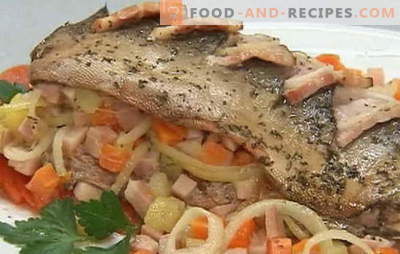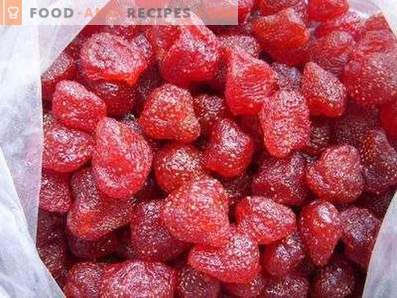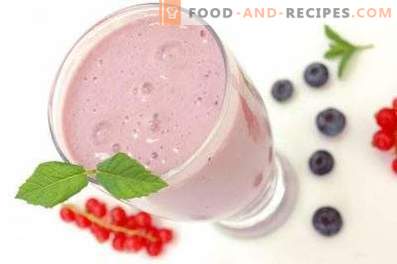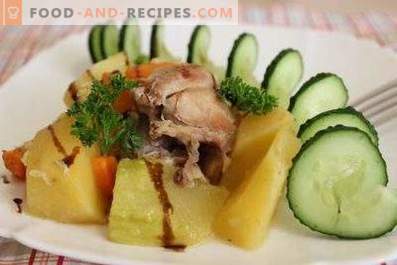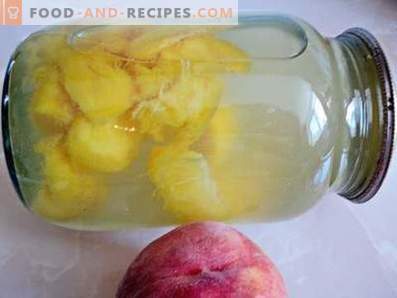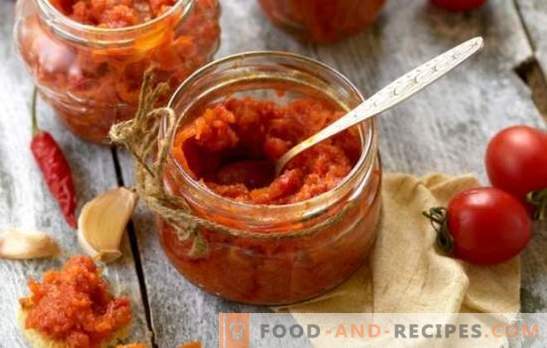
Adjika for the winter - the general principles of cooking
Classical adjika is a spicy seasoning that was born in sunny Abkhazia. It is made from salt, spices and vegetable puree and has a pasty consistency. This adjika is just salt, which is ground with other spices. She received a large spread in the south. This is because the classic adjika is a very good preservative. Meat marinated in adjika may not deteriorate for several days.
However, what we understand by the word adjika today is a modified version of the classic seasoning, which has become widespread in Armenia, Georgia, Russia and many other countries. The hostesses serve her to the table not only in the season when the tomatoes are fleshy and filled with juice, but they also prepare adjika for the winter.
Usually adjika is bright red, but if green unripe hot pepper was used during cooking, then adjika itself will have a green tint. Initially, tomatoes were not part of this seasoning. As it spread, initially sharp adjika began to be diluted with vegetable purees. Tomato puree has become the most popular, as it gives a sharp basis a little sourness and a unique aroma. In addition, tomatoes are amenable to heat treatment, which allows preserving and harvesting adjika for the winter. Based on personal gastronomic preferences, it is possible to harvest adjika for the winter on the basis of hot pepper or on the basis of tomatoes or other vegetables, such as zucchini.
The classical adjika was previously prepared on two flat stones. All ingredients were ground into fine powder or paste, depending on the season and purpose (seasonal adjika to the table or adjika for the winter). This process was long and laborious, however, not much is required for the classical adzhika, so this method is justified.
Today, the “correct” adjika is prepared using a coffee grinder, which allows you to mix components in seconds. For cooking adzhiki, which consists of vegetable puree, usually used meat grinder or blender. Regardless of the chosen recipe, there is one rule: all ingredients must be not only perfectly fresh, but also ripe, in order to have a rich taste and deep aroma. For this reason, adjika for winter is usually harvested in late summer or early fall.
Recipe 1: Adjika for the winter “Classical”
Ingredients
• About a kilogram of walnuts
• 4 heads of peeled garlic
• 4-5 pods of bitter pepper
• A couple of tablespoons of wine vinegar.
• To taste hops-suneli
• Saffron to taste
• Coriander seeds or fresh cilantro
Method of preparation
Red hot pepper must be washed, remove the tails and seeds. Grind peppers with a coffee grinder or blender. Grind walnuts and garlic, mix them thoroughly with red pepper. Add coriander or chopped cilantro, hops-suneli, saffron. Thoroughly mix everything, add wine vinegar, mix again and spread on banks.
Such adjika for the winter does not require sterilization and heat treatment, since it is made from products that do not spoil, and are also preservatives. This adjika is perfect for meat and fish dishes, used as a marinade, as well as a dressing for the first dishes.
Recipe 2: Adjika for the winter “Home”
This adjika for the winter is not spicy and is great for dishes from meat, fish and potatoes. It perfectly emphasizes the taste of the first courses.
Ingredients
• 2-3 kilograms of plum tomatoes
• 300 grams of onions
• Peeled garlic - 4-5 heads or about 200 grams
• A pound of sweet carrots
• A pound of red bell pepper
• 3-4 pods of red hot pepper
• A glass of sunflower and corn oil
• A glass of granulated sugar
• Salt - 4 tbsp.
• Glass of vinegar 6%
Method of preparation
Bulgarian and red pepper wash, cut, clean from seeds. Tomato sliced and peeled. Peel the onions and carrots. To twist all vegetables through the meat grinder. Grease the walls of the pan with oil, simmer on the stove for 30 minutes. Pour in vegetable oil, add vinegar, sugar and salt and keep on fire for another hour, not forgetting to stir it regularly. Sterilize jars and lids. Ready adjika spread on banks and tighten. Turn the jars upside down, cover with a blanket and let them cool.
Recipe 3: Adjika for the winter with horseradish
Adjika with horseradish is a long-time favorite option for preparing adjika for the winter. This recipe is so popular because it does not require boiling. Thanks to horseradish, such adjika is perfectly suited for meat dishes, sausages and even aspic.
Ingredients
• 2-3 kilograms of plum tomatoes
• a couple of pounds of red bell pepper
• several heads of peeled garlic
• 200-300 grams of horseradish root
• A glass of sugar
• A glass of apple cider vinegar
• A pair of tablespoons of salt
Method of preparation
All vegetables must be thoroughly washed and cut into pieces. Twist tomatoes, peppers and garlic in a meat grinder. Twist the horseradish in a meat grinder. In order not to shed tears during the twisting of horseradish, and all the spiciness remained in the dish, you should put a plastic bag on the meat grinder where the twisted horseradish will fall. In a saucepan, mix all the vegetables, add sugar, salt, vinegar and vegetable oil. Sterilize jars and lids. It is recommended to take small jars, as the seasoning consumption is small and the adjika can disappear in large jars. Spread the adjika over the can and twist.
Adjika for the winter with horseradish is recommended to be stored in the refrigerator, as it is not subjected to heat treatment and can sour in heat. Preservatives are horseradish, salt and vinegar, which allow you to store adjika in the cold for up to 6 months.
If preference is given to spicy adjika, then the Bulgarian pepper can be replaced with bitter pepper. It is necessary to reduce the amount of salt, but not by much.
Such adzika for the winter is not only tasty, but also very useful, it helps to resist viruses and strengthen the immune system.
Recipe 4: Adjika for the winter with apples
For adzhika for the winter with apples, it is necessary to take only apples of sour varieties, since the sweet taste of adzhika is not quite appropriate. In addition, the acid in apples helps to keep the adjika fresh longer. Adjika for the winter with apples goes well with chicken, pork, offal, as well as regular potatoes. Dishes with adjika are very aromatic, with a bright taste. Ingredients
• About 3 kg of plum tomatoes
• Kilo and a half sour green apples
• About 1 kg of Bulgarian pepper
• Kilo sweet carrots
• 200-300 grams of peeled garlic
• 3-4 pods of red hot pepper
• A glass of vinegar 6%
• A glass of sunflower or corn oil
• A glass of granulated sugar
• A quarter cup of table salt.
Method of preparation
Peel the apples, remove the tails and core. Peel Bulgarian and chilli peppers, remove the stem and seeds. Wash and cut the tomatoes, remove the core. Wash, peel and chop the carrot. Apples, tomatoes and carrots chop. Lubricate the pan with vegetable oil. Put the puree in a saucepan and keep on low heat for 45 minutes. Pour sugar, salt and vinegar. Cook for 5-10 minutes. Pour in vegetable oil. And boil for another 10 minutes. Vegetable oil must be added at the very least, as salt and sugar do not dissolve well in oil. Sterilize jars and lids. Spread the adjika over the cans and screw. Cover with a warm blanket until cool.
Recipe 5: Adjika for the winter of plums
This recipe is perfectly suited for red meat dishes, since adjika for the winter of plums resembles sauce rather than seasoning. In addition, it is very good with rice.
Ingredients
• Kilogram of ripe plums
• A pair of heads of peeled garlic
• Half a cup of granulated sugar
• 2 hot peppers
• A small jar of tomato paste or 2-3 fresh tomatoes
• Tablespoon salt
Method of preparation
Ripe plums must be carefully bruised, well washed, cut in half and cleaned of seed. Wash hot peppers, dry them and cut off their tails. The sharpness of adzhika depends on the amount of bitter pepper, therefore, if desired, it can be increased or decreased. Garlic should be peeled. Each clove cut in half and remove the core. If this is not done, then adzhika can have an unpleasant aftertaste, and so garlic will give only a pleasant and delicate aroma. Scroll through the plums, pepper garlic through the meat grinder. If fresh tomatoes are used for cooking, they should also be twisted in a meat grinder, and then filtered through gauze or a colander with a fine mesh. This is necessary so that the bones do not spoil the appearance of adzhika. Smear a pot or cauldron with vegetable oil, mix all ingredients, cook for 20-25 minutes until adjika thickens. It is necessary to constantly stir, so that adjika does not burn and cook evenly. Sterilize jars and lids. Spread ready-made adjika to the banks and tighten. Keep jars warm until cool.
Recipe 6: Adjika for the winter of zucchini
Adjika for the winter from zucchini is not a very spicy seasoning. It can be either a supplement to meat or a separate dish, more like a vegetable caviar. It goes well with side dishes such as potatoes, pasta and rice.
Ingredients
• 2-3 kilograms of peeled zucchini
• One and a half to two kilo meaty tomatoes
• A pound of sweet carrots
• A pound of red pepper
• 5-6 heads of peeled garlic
• A glass of vegetable oil
• 2 tablespoons of salt
• Half a cup of sugar
• 3-4 hot pepper pods
• Half a cup of vinegar 6%
Method of preparation
Squash must be washed, peeled, cut into large pieces. Tomatoes must be washed, cut, cut the core. Bulgarian and hot peppers must be cleaned of seeds, as they are hard and do not become softer during heat treatment. In addition, they can cause the bank to swell in the winter. All vegetables must be minced and cooked in an enamel saucepan for 40-45 minutes. The volume will be approximately doubled. Add salt, sugar, vinegar. Banks and covers must be sterilized. Spread the adjika over the jars, let them cool under the covers. Such an adjika can be consumed after a couple of weeks, but the full flavor will manifest only after a month.
Recipe 7: Adjika for the winter of eggplant
Ingredients
• A pair of kilograms of fleshy tomatoes
• Kilo of ripe eggplants
• Kilo of sweet bell pepper
• 2 heads of peeled garlic
• 2–3 pieces of hot pepper
• 2 tablespoons of salt
• spoon of sugar
• Half a cup of sunflower or corn oil
Method of preparation
All vegetables must be thoroughly washed, sweet peppers must be cleaned of seeds, and the core of the tomatoes cut. If this is not done, the banks may swell in the winter. Pierce the eggplants in several places with a fork and bake for 20 minutes in an oven preheated to 200 degrees. Sweet pepper twist in a meat grinder or in a blender. Heat the vegetable oil in an enamel pot and add sweet pepper to it. Fry a couple of minutes until all the liquid boils away. Twist in a meat grinder or blender tomatoes. Add tomato puree to the pan. Bring to a boil and cook until all the liquid has evaporated. Peel the eggplants. Twist the remaining pulp in a meat grinder or in a blender. Add the eggplants to the pan, bring to a boil and let simmer for 10 minutes. Pass the garlic through the garlic press and add it along with the spices to the pan. Banks are well washed and dried in the oven (or sterilized). Spread the adjika over the cans and screw. Turn the jars upside down, cover with a blanket and let them cool.
Adjika for the winter - tricks and useful tips
Depending on the recipe and the degree of spiciness, adjika can be both a seasoning and a full-fledged independent dish, which can be spread on bread or used as vegetable caviar. It all depends on personal gastronomic preferences. Bitter pepper affects the sharpness of taste, therefore, by increasing or decreasing its quantity, you can adjust the sharpness. The consistency depends on the cooking time, as well as the variety of tomatoes. It is best to take plum tomatoes, as they are more fleshy, cooking time can be reduced, thereby retaining the beneficial vitamins.
For the preparation of adzhika for the winter, it is preferable to use red Bulgarian and bitter peppers, since then the dish will have a bright red, rich color, however, you can take peppers of any color, green or even white. It will not affect the taste of the dish in any way, only the color will be slightly paler.
Cooking adzhika better to do with gloves, because then for a long time you have to wash your hands from the smell of garlic and horseradish. If you accidentally touch the eye after cleaning a hot pepper, it will irritate the mucous membranes and burn. Even if several hours have passed after cooking, the particles of pepper remain on the skin for a very long time.
In winter, when the next jar of adzhika is just opened, you can add some fresh greens, then in winter there will be a summer mood on the table.
Everyone knows that adjika goes well with dishes such as meat, fish, poultry, but rarely anyone tried to eat adjika with cottage cheese and melon. It turns out really interesting taste.
Recipes adjika very much. To understand which one you like more, you can only try them all. When the perfect recipe is found, the adjika becomes a favorite addition to the table, and the adjika reserves for the winter quickly run out.


